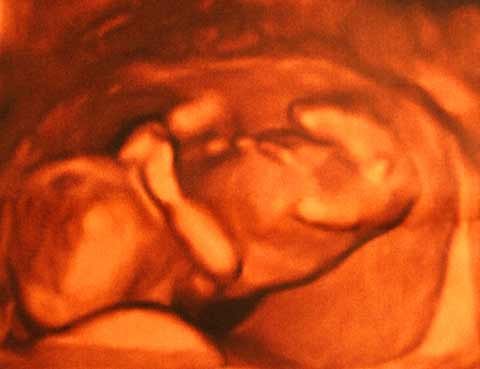Embryonic Stem Cells: 5 Misconceptions

Last week President Obama lifted restrictions on federal funding for embryonic stem cell research and asked the National Institutes of Health to come up with a funding game plan within 120 days. Yet while the field of stem cell research holds great promise, hype and misconceptions cloud the picture. Here are a five such misconceptions.
1. George W. Bush killed research on embryonic stem cells.
Wrong. Bush actually was the first president to allow federal funding. Bill Clinton had chickened out. A very brief history follows.
In 1974, Congress banned federal funding on fetal tissue research and established the Ethics Advisory Board to study the nascent field of in vitro fertilization. In 1980 Ronald Reagan killed the Board, which was friendly to embryonic research, resulting in a de facto moratorium on funding. Congress tried to override the moratorium in 1992, but George H.W. Bush vetoed it. Bill Clinton lifted the moratorium in 1993 but reversed his decision in 1994 after public outcry. In 1995, Congress passed the Dickey-Wicker Amendment, banning federal funding on any research that destroys human embryos.
In 2001 Bush enabled limited funding on embryonic stem cell lines already derived from discarded embryos; the life or death decision already had been made, he said. He thought more than 60 lines existed, but within months scientists realized that only about 20 were viable, not enough to do substantial research.
2. Bush spurred development of alternative sources of embryonic stem cells.
Sure, in the same way his disastrous invasion of Afghanistan and Iraq spurred the development of treatment for massive head trauma, or the way his economic policies have encouraged all of us to do more with less. One doesn't advance a scientific field by handicapping researchers.
Sign up for the Live Science daily newsletter now
Get the world’s most fascinating discoveries delivered straight to your inbox.
Regardless, the biggest advance in recent years has come from Japan by a researcher not affected by U.S. research funding rules. U.S. federal funding could have led to even more advances of alternative sources, because funding stem cell research in general can have a synergetic effect across the various research specialties.
3. Embryonic stem cells are no longer needed.
Wrong. In 2007, Shinya Yamanaka of Kyoto University in Japan announced a breakthrough in which adult skin cells could be coaxed back into an embryonic state and thus regain the ability to branch into any kind of human cell, such as heart, pancreas or spinal cord nerve cell. While a major advance, the work itself is in an embryonic state, years from practical application.
The work on these so-called induced pluripotent stem (iPS) cells complements embryonic stem cell research; it doesn't replace it. The iPS cells have a greater tendency to become cancerous. Work on "real" embryonic stem cells is needed, at a minimum, to understand what iPS cells lack. Many view Yamanaka's technique as brilliant yet worry that his four-gene manipulation of adult cells might be too simplistic.
Research on iPS cells is particularly exciting because it opens the possibility of using one's own cells — say, from skin — to produce pancreas cells to cure diabetes, whereas embryonic stem cells would introduce DNA from a stranger.
4. Cures are around the corner.
Wrong. Stem cell research is dominated by hype. Remember gene therapy, the insertion of genes into human cells to cure all types of diseases? Nearly two decades after the first gene therapy procedure, the technique remains highly experimental and problematic. Stem cell research faces a similar future.
5. Obama's executive order means "all systems go."
Unlikely. The new rule eliminates red tape, for now researchers can study any established embryonic stem cell line. Previously, stem cell researchers receiving private and public funding needed to keep detailed records of spending, down to which microscope is used for which kind of stem cell. That's history.
But the Dickey-Wicker Amendment (see No. 1 above) is the law of the land, meaning federally funded researchers cannot create new embryonic stem cells lines. They can work only on those new lines created with private funding, which aren't that plentiful. Also, some scientists worry that crucial private funding will dry up with the poor economy and false reassurances that federal funding is in place.
The furor over stem cells focuses on the definition of human life, which many believe begins when sperm meets eggs. Yet inevitably lines will be blurred in coming years when babies are born with the DNA of two sperms or ova transplanted into an egg. Just as humans evolved from non-humans — with no precise generation in which a non-human gave birth to a human — we may come to understand that all of nature is a continuum.
- The Future of Baby-Making
- Vote: Do You Favor Embryonic Stem Cell Research?
- Stem Cell News & Information
Christopher Wanjek is the author of the books "Bad Medicine" and "Food At Work." His column, Bad Medicine, appears each Tuesday on LiveScience.

Christopher Wanjek is a Live Science contributor and a health and science writer. He is the author of three science books: Spacefarers (2020), Food at Work (2005) and Bad Medicine (2003). His "Food at Work" book and project, concerning workers' health, safety and productivity, was commissioned by the U.N.'s International Labor Organization. For Live Science, Christopher covers public health, nutrition and biology, and he has written extensively for The Washington Post and Sky & Telescope among others, as well as for the NASA Goddard Space Flight Center, where he was a senior writer. Christopher holds a Master of Health degree from Harvard School of Public Health and a degree in journalism from Temple University.









